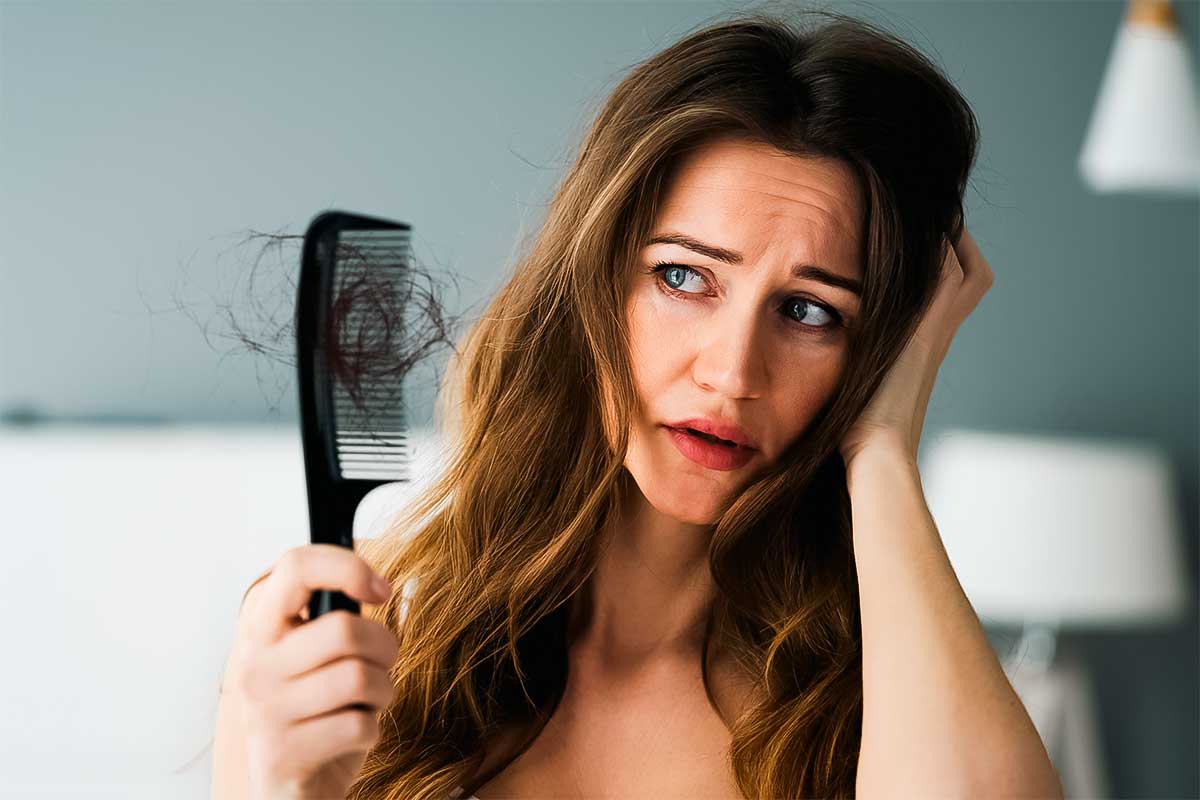Have you ever looked at your hairbrush, shower drain, or pillow and wondered, "Am I losing too much hair?" You're not alone! Hair shedding is a completely natural process, but knowing how much is normal can help ease concerns about hair loss.
On average, a person sheds between 50 to 100 hairs per day as part of the hair growth cycle. While this number can vary based on factors such as age, hair type, and overall health, excessive shedding may indicate an underlying issue. Let’s explore normal daily hair shedding, what affects it, and when to seek help if you're experiencing significant hair loss.
Why Do We Shed Hair Daily?
Shedding is a normal and necessary part of the hair growth cycle. Our hair goes through different stages of growth, rest, and shedding. Understanding these phases helps explain why daily shedding occurs.
1. Anagen Phase (Growth Stage)
This is the active growth phase, lasting between 2 to 7 years. About 85-90% of your hair is in this stage at any given time.
2. Catagen Phase (Transition Stage)
This short 2-3 week phase signals the end of active hair growth. The hair follicle begins to shrink and detach from the blood supply.
3. Telogen Phase (Resting Stage)
During this stage, which lasts about 3 months, the hair stays in place but is no longer growing. At the end of this phase, the hair falls out to make room for new growth. 10-15% of your hair is in this stage at any given time.
4. Exogen Phase (Shedding Stage)
This is the actual shedding process where old hairs are released from the scalp. Shedding 50 to 100 hairs per day is normal as part of this phase.
What Affects Daily Hair Shedding?
Although shedding is natural, several factors can increase or decrease the amount of hair you lose each day.
1. Hair Washing and Brushing
Have you ever noticed that you seem to shed more hair on wash days? That’s because loose hairs that were ready to fall out get dislodged when shampooing and brushing. People who wash their hair less frequently may see increased shedding when they do wash, but it's simply delayed shedding rather than true hair loss.
2. Seasonal Changes
Many people notice more hair shedding during the fall and spring months. This seasonal shedding is completely normal and linked to changes in temperature and daylight exposure, which can affect the hair growth cycle.
3. Stress and Hormones
Physical or emotional stress can push more hairs into the telogen phase, causing a temporary increase in shedding. This condition, called telogen effluvium, is common after illness, childbirth, surgery, or extreme stress. Hormonal changes, like those during pregnancy, menopause, or thyroid imbalances, can also affect hair shedding.
4. Diet and Nutrition
A lack of key vitamins and minerals such as iron, zinc, vitamin D, and biotin can weaken hair follicles and lead to increased shedding. A well-balanced diet rich in protein and healthy fats supports strong, healthy hair.
5. Hair Styling and Chemical Treatments
Excessive use of heat tools, hair dye, perms, and relaxers can weaken hair strands and cause breakage, which might be mistaken for shedding. Additionally, tight hairstyles (like ponytails, braids, and buns) can cause traction alopecia, leading to more noticeable hair loss over time.
When Should You Worry About Hair Shedding?
While 50-100 hairs per day is considered normal, shedding beyond that may indicate a problem. Here are some signs that your hair shedding might be excessive:
-
You notice clumps of hair falling out when washing or brushing.
-
Your part looks wider or your scalp becomes more visible.
-
Your hairline is receding noticeably.
-
You experience thinning across the entire scalp rather than in small areas.
-
Your shedding has increased suddenly without an obvious reason (e.g., recent illness, pregnancy, or stress).
If you're experiencing excessive hair loss, it’s a good idea to consult a dermatologist or trichologist to determine the cause and explore treatment options.
How to Maintain Healthy Hair and Reduce Excess Shedding
If you're concerned about hair shedding, there are steps you can take to strengthen your hair and promote healthy growth.
1. Be Gentle When Brushing
Use a wide-tooth comb or a soft-bristle brush to avoid pulling on delicate strands. Start detangling from the ends and work your way up to prevent breakage.
2. Avoid Overwashing
Shampooing every day can strip natural oils, making hair brittle. Depending on your hair type, washing 2-3 times per week may be sufficient.
3. Use Nourishing Hair Products
Look for sulfate-free shampoos and conditioners with ingredients like keratin, biotin, and argan oil to strengthen hair and prevent excessive shedding.
4. Maintain a Healthy Diet
Eat foods rich in protein (eggs, fish, lean meats), iron (spinach, lentils), and omega-3 fatty acids (salmon, flaxseeds) to support hair health.
5. Reduce Stress
Since stress can lead to hair shedding, practicing relaxation techniques like yoga, meditation, and regular exercise can help maintain a healthy hair cycle.
6. Limit Heat and Chemical Damage
Try to reduce the use of hot styling tools, harsh hair dyes, and tight hairstyles to minimize unnecessary hair stress and breakage.
7. Consider Hair Growth Supplements
If your diet lacks certain nutrients, hair supplements containing biotin, vitamin D, zinc, and collagen may help strengthen your hair and reduce excessive shedding.
Shedding 50 to 100 hairs per day is completely normal as part of the hair growth cycle. However, if you're noticing a significant increase in hair shedding, thinning, or bald patches, it may be worth consulting a professional to rule out underlying issues. By understanding the causes of hair shedding and adopting a healthy hair care routine, you can maintain strong, beautiful hair for years to come.
For more skincare, haircare and beauty tips and insight, look no further than Beautyvice.com!

Share:
The Difference Between Cream and Gel Skin Moisturizers: Which One is Right for You?
The Must-Have Skincare Product Every Man Needs in His Routine